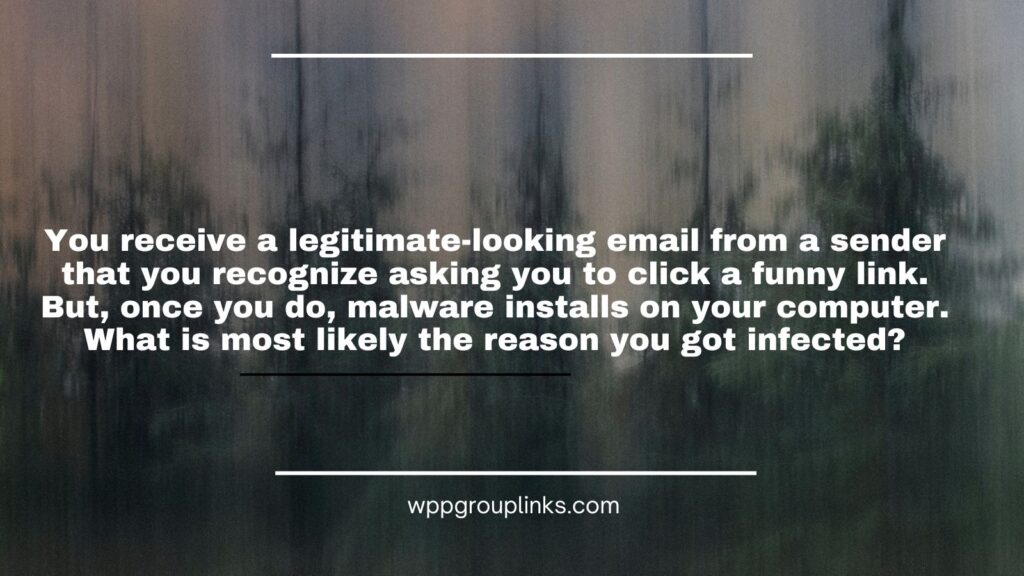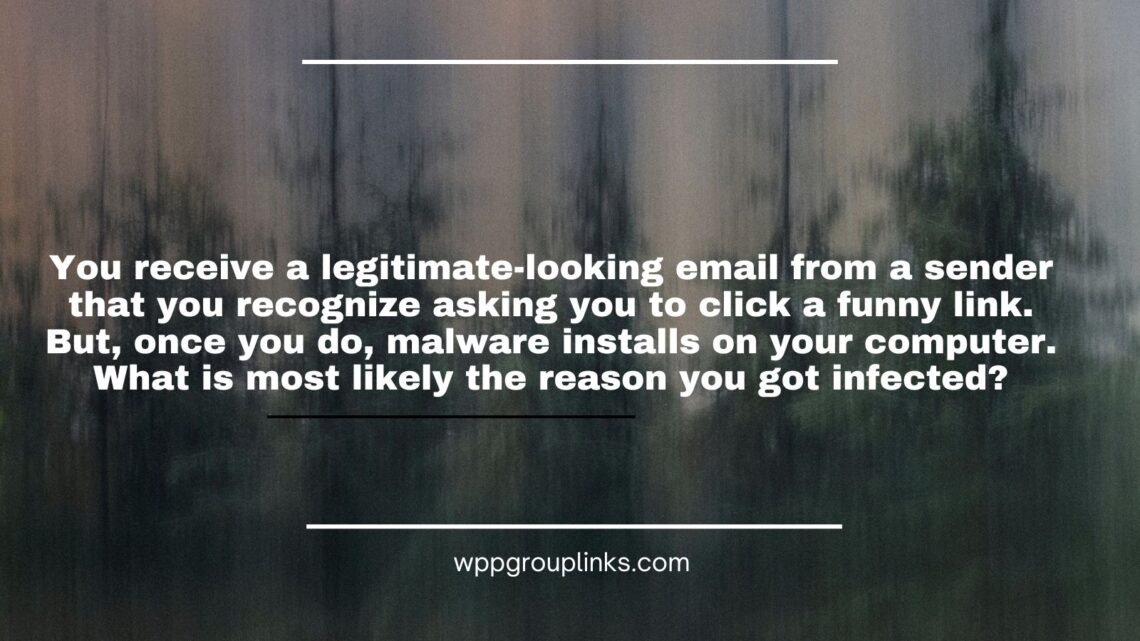
Q: You receive a legitimate-looking email from a sender that you recognize asking you to click a funny link. But, once you do, malware installs on your computer. What is most likely the reason you got infected?
or
Q: You get an e-mail from someone you know that seems to be authentic, requesting that you click on an amusing link. Malware, however, installs on your computer after you do. What is the most probable cause of your infection?
- The sender’s email has been hacked.
- The sender’s email password was cracked.
- The sender’s email address was spoofed.
- The sender’s email password was used in a DNS Cache Poisoning attack.
Explanation: According to what you have mentioned, the situation is consistent with a “Phishing” assault. Through the use of an email that seemed to be received from a known source, the attacker was able to convince you to click on a link that was included in the message. On the other hand, clicking on the link will take you to a malicious website that, if opened, will install malware on your machine.
Within the context of this situation, the most important cause for infection is that the victim fell prey to the social engineering techniques that were used by the attacker. Phishing is a sort of social engineering that involves the conjuring up of a false feeling of trust or urgency to trick someone into doing certain activities, such as clicking on links or disclosing sensitive information. It is crucial to exercise caution and check the legitimacy of unexpected emails, especially if they seem to be from sources that the recipient is acquainted with.





